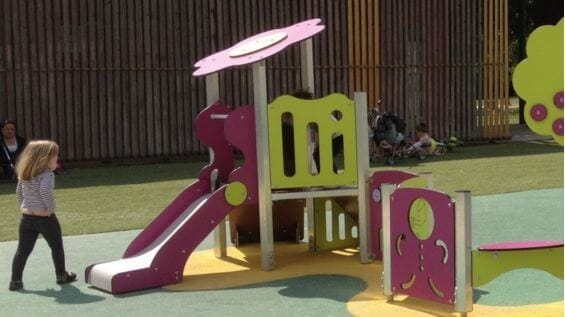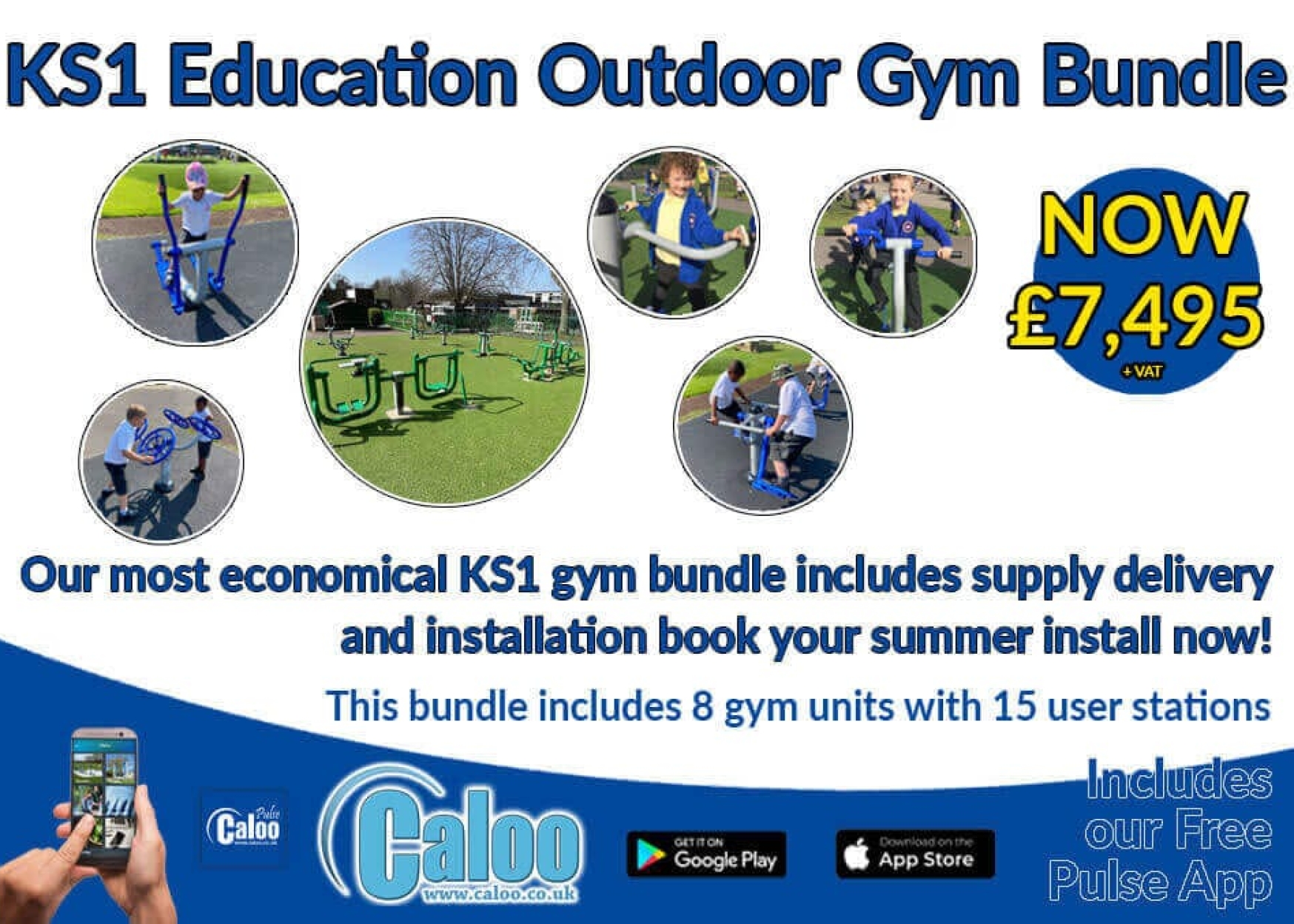
Oct

The Importance of Outdoor Play for EYFS Development
The Early Years Foundation Stage (EYFS) framework provides a foundation for early childhood education, supporting the holistic development of children from birth to five years old. Outdoor learning environments play an essential role in meeting EYFS goals, offering unique opportunities for children to explore, interact, and learn through play. By creating thoughtfully designed play spaces, we can foster development across the 7 areas of learning for EYFS.
Why Outdoor Learning is Essential in EYFS
Outdoor learning is more than just physical play—it’s a vital part of early development. Outdoor play areas allow children to develop independence, confidence, and curiosity in a safe, engaging setting. Outdoor play also promotes problem-solving, resilience, and adaptability by encouraging children to take measured risks, explore their capabilities, and interact with their surroundings. A well-designed outdoor play area helps children develop essential skills in a natural, open space. At Caloo we take these considerations when working with you in designing your amazing play area for Nurseries all over the UK.
Supporting the Seven Areas of Learning Through Outdoor Play
What is EYFS and how does it work? The EYFS framework identifies seven key areas of learning, each of which can be enhanced through outdoor play. By incorporating diverse equipment and activities, outdoor play spaces support the development of foundational skills across all learning areas.
1.Communication and Language
Outdoor play creates endless opportunities for communication as children engage with peers, share ideas, and express themselves. Storytime sessions, group games, and role-play scenarios encourage children to build vocabulary, improve listening skills, and gain confidence in expressing their thoughts.
2.Physical Development
Physical activity is at the heart of outdoor play. Low-level multiplay units, promote climbing, balancing, and sliding, helping children develop motor skills, coordination, and strength. These activities also teach spatial awareness and help children understand how their bodies move within a space.
3.Personal, Social, and Emotional Development
Outdoor play fosters social skills as children learn to work together, share, and navigate group dynamics. Cooperative games and team activities encourage resilience, problem-solving, and self-regulation, while also providing opportunities for children to build friendships and manage emotions in a natural setting.
4.Literacy
Incorporating literacy into outdoor spaces makes learning dynamic and enjoyable. Features like letter and number markings, story zones, and role-play structures can make reading and writing a part of everyday play, helping children associate literacy with fun and develop a love of language from an early age.
5.Mathematics
Outdoor play environments offer countless ways to introduce basic mathematical concepts. Counting steps, recognising shapes, and creating patterns with natural materials are just a few of the ways that children can explore numbers and spatial relationships in a playful context, building essential maths skills through hands-on learning.
6.Understanding the World
Outdoor play encourages children to explore the world around them. Gardening, observing wildlife, and interacting with nature help children learn about their environment, seasons, and weather patterns. This fosters curiosity and respect for nature, laying the groundwork for environmental awareness and appreciation.
7.Expressive Arts and Design
Creative expression thrives in outdoor settings. Sensory walls, musical panels, and playhouses serve as platforms for imaginative play, role-playing, and artistic expression, allowing children to explore different forms of creativity. These activities stimulate children’s imaginations, helping them develop self-expression and problem-solving skills in a vibrant, sensory-rich environment.
Designing EYFS-Friendly Play Spaces – What to Include
Creating an effective EYFS outdoor play area involves thoughtful design choices that encourage exploration and learning in a safe, accessible space. Ideal elements for EYFS play spaces include:
Low-Level Multiplay Units: Scaled-down slides, climbing frames, and balance beams provide safe, engaging activities that support physical development and motor skills.
Sensory Areas: Tactile elements like sand pits, water play stations, and textured surfaces engage children’s senses and foster sensory exploration.
Open-Ended Play Structures: Equipment that encourages imaginative play, such as playhouses and role-play panels, provides opportunities for creative self-expression and cooperative play.
Creating Inclusive and Accessible Play Areas
An inclusive outdoor space allows children of all abilities to participate and enjoy the benefits of play. For EYFS playgrounds, inclusive elements might include:
Ground-Level Features: Providing play elements that are accessible to wheelchairs or with limited mobility allows every child to engage with the space.
Quiet Zones: Sensory-friendly spaces and quiet corners can provide children who need a break from high-stimulation areas with a peaceful place to relax, helping to accommodate children with diverse sensory needs.
Inclusive playgrounds promote empathy, understanding, and a sense of community, helping all children feel welcomed and valued.
Encouraging Environmental Awareness in Early Years
EYFS outdoor play spaces provide an excellent opportunity to introduce children to eco-friendly practices and nature-based learning. Incorporating sustainable materials, such as recycled safe rubber for surfacing or sustainably sourced wood, is one way to foster environmental awareness. Additionally, interactive garden areas allow children to plant seeds, water plants, and observe growth, giving them a hands-on understanding of nature and teaching them to respect the environment.
Benefits of Outdoor Play for EYFS Development
A well-designed EYFS playground is more than a play area—it’s a dynamic learning environment that supports holistic child development. By providing accessible, stimulating, and safe outdoor spaces, we can help children develop confidence, resilience, and a lifelong love of learning. With the support of outdoor play, children can explore new concepts, form friendships, and achieve key developmental milestones in a natural, enjoyable setting.
Frequently Asked Questions
Question: What type of surfacing is best for EYFS play areas?
Answer: Impact-absorbing surfaces like wetpour or rubber mulch are ideal for EYFS play areas, providing a safe environment that reduces the risk of injury.
Question: How can we make an existing EYFS playground more inclusive?
Answer: Adding ground-level play features, sensory-friendly areas, and accessible surfacing are effective ways to make a playground more inclusive for children of all abilities.
Question: Why are sensory elements important in EYFS playgrounds?
Answer: Sensory elements engage children’s senses, enhancing cognitive development and allowing children to explore and learn through touch, sound, and sight.
Question: Are natural materials necessary for EYFS outdoor spaces?
Answer: Using natural materials supports eco-friendly design and helps children connect with the environment, fostering an appreciation for nature.
Question: What are some budget-friendly ways to refresh an EYFS outdoor play area?
Answer: Simple additions like repainting equipment, adding low-cost sensory panels, or creating themed markings on the surfacing can refresh an EYFS area without extensive costs.
Supporting EYFS Learning with Outdoor Play
At Caloo, we’re dedicated to designing safe, inclusive, and engaging outdoor play spaces that support the EYFS framework. Contact us today to discuss how we can help you create an EYFS-friendly playground that inspires children and promotes holistic development in a fun, supportive environment.

















